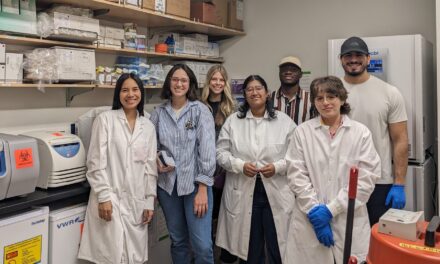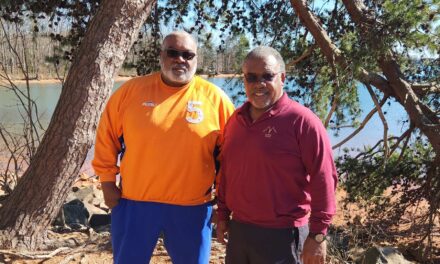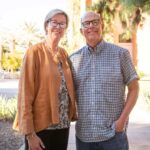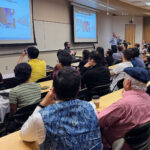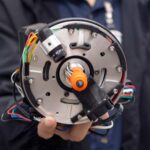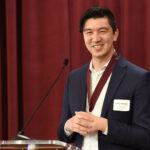
ASU engineers have role in new national manufacturing research consortium
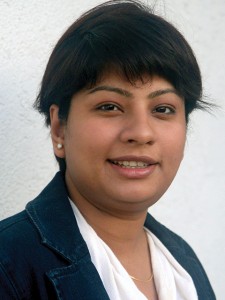
Srabanti Chowdhury, an assistant professor in the School of Electrical, Computer and Energy Engineering, is the principal investigator for ASU’s role in a new national power electronics research consortium.
Arizona State University electrical engineers Srabanti Chowdhury and Raja Ayyanar will lead research for the university’s role in a new national consortium formed to develop the next generation of power electronics.
Funded by the U.S. Department of Energy, the work of the Next Generation Power Electronics Innovation Institute is expected to boost the nation’s manufacturing industry and create new jobs.
The institute led by North Carolina State University brings together 18 companies, five universities and two major laboratories.
“We are very excited to be part of the national network for manufacturing innovation, focused on the development of next-generation power electronics,” said Sethuraman “Panch” Panchanathan, senior vice president for Knowledge Enterprise Development at ASU. “This institute is an excellent example of how universities can work with the government and the private sector to respond to the need for rapid economic development expansion.
The energy department is awarding $70 million over five years to support the institute, and that funding will be matched by at least $70 million in nonfederal commitments by a team of businesses, universities and the state of North Carolina.
ASU’s research for the consortium will be supported by a five-year, multimillion-dollar program.
The Obama administration plans to establish three manufacturing institutes as part of an effort to secure U.S. leadership worldwide. This consortium is the first of the three institutes.
Chowdhury is an assistant professor and Ayyanar is an associate professor in the School of Electrical, Computer and Energy Engineering, one of ASU’s Ira A. Fulton Schools of Engineering. Chowdhury is the principal investigator for ASU in the national consortium.
“We are proud to be part of this major national initiative that recognizes the accomplishments and promise of our faculty and students,” says Stephen M. Phillips, director of the School of Electrical, Computer and Energy Engineering.
Chowdhury will focus on development of gallium nitride-based power electronic devices for energy-efficient power conversion. “The main goal is to develop a technology that can be readily adopted by industries for high-volume manufacturing,” she says.
Ayyanar will focus on applications of devices and develop medium voltage high power converters – particularly for renewable-energy interface and motor drive – using Silicon Carbide-based materials.
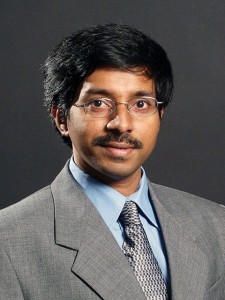
Raja Ayyanar, an associate professor in the School of Electrical, Computer and Energy Engineering, will help lead work to provide more efficient power conversion technology.
Their research will be essential to the consortium’s primary engineering mission to provide technology for more efficient and reliable power conversion – the process of converting one form of power to another.
Power conversion is necessary for the functioning of many common electronic devices, from charging laptop computers, cell phones and electric vehicles to powering the electrical systems in homes. It is also needed to provide an interface between sources of renewable energy and the existing national power grid.
Most of today’s power conversion is accomplished with a silicon-based technology that has reached the limits of it capability to convert power efficiently, Chowdhury explains.
The inefficiency of the current power conversion process results in enormous amounts of wasted power, she says. Chowdhury, Ayyanar and their consortium partners will use silicon carbide and gallium nitride, the two leading wide-bandgap semiconductors, to significantly out-perform the current technology in efficiency and minimize power waste.
Wide-bandgap semiconductors can operate at higher temperatures than silicon-based technologies, thus providing better durability and reliability at higher voltages – improving performance while using less electricity.
Such advances would not only make power conversion more efficient but enable motors, consumer electronics and devices that are components of electrical power grids to be made smaller and operate faster.
ASU’s involvement with the new institute will give engineering faculty members an opportunity to give students training in power electronics based on the research consortium’s progress, Chowdhury says.
Companies that are part of the institute are ABB, APEI, Avogy, Cree, Delphi, Delta Products, DfR Solutions, Gridbridge, Hesse Mechantronics, II-VI, IQE, John Deere, Monolith Semiconductor, RF Micro Devices, Toshiba International, Transphorm, USCi and Vacon.
Member universities in addition to ASU and North Carolina State, are Florida State University, the University of California at Santa Barbara and Virginia Polytechnic Institute.
The National Renewable Energy Laboratory and the U.S. Naval Research Laboratory are the other members.
Announcements about awards for two more national manufacturing institutes are expected in coming weeks. Last year President Barack Obama launched a competition for all three institutes with a federal commitment of $200 million across five federal agencies – Defense, Energy, Commerce, NASA and the National Science Foundation. The additional two institutes will focus on digital manufacturing and design innovation, and lightweight modern materials manufacturing.
Media Contact:
Joe Kullman, joe.kullman@asu.edu
(480) 965-8122
Ira A. Fulton Schools of Engineering



